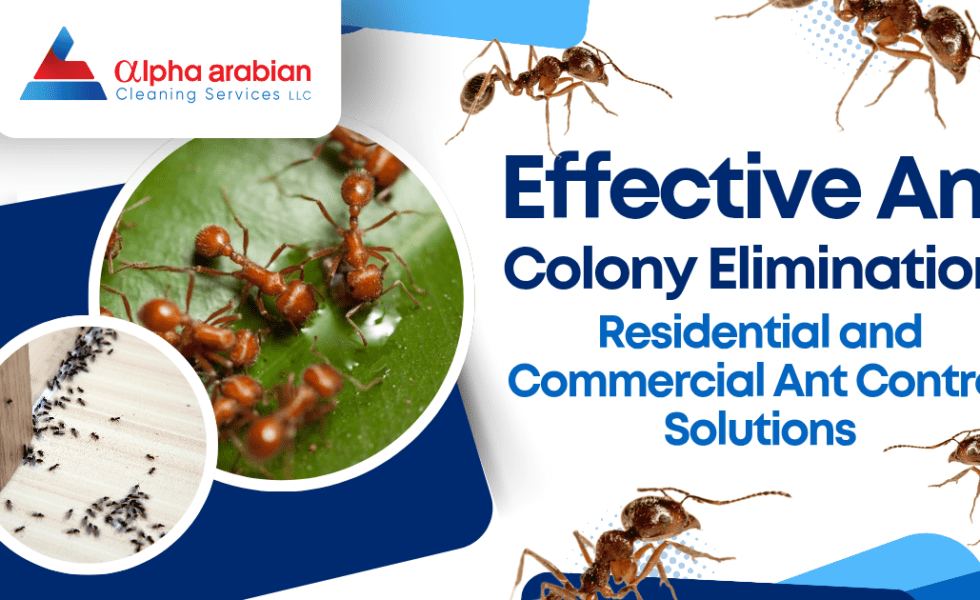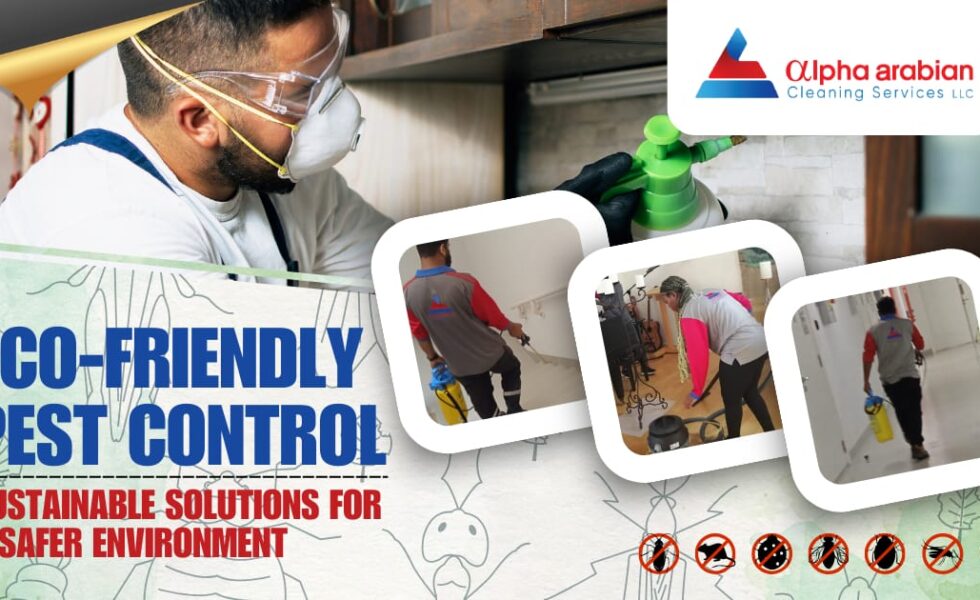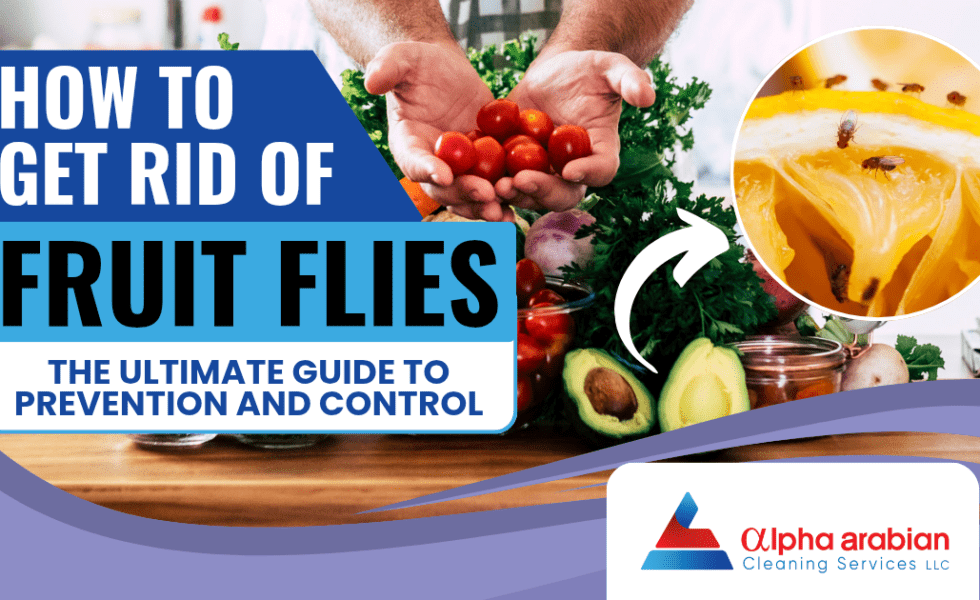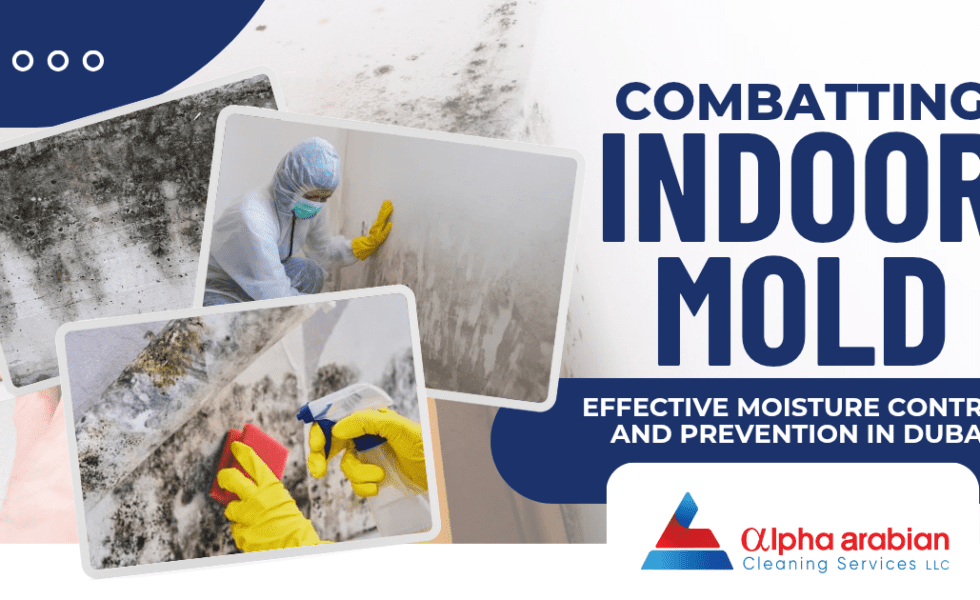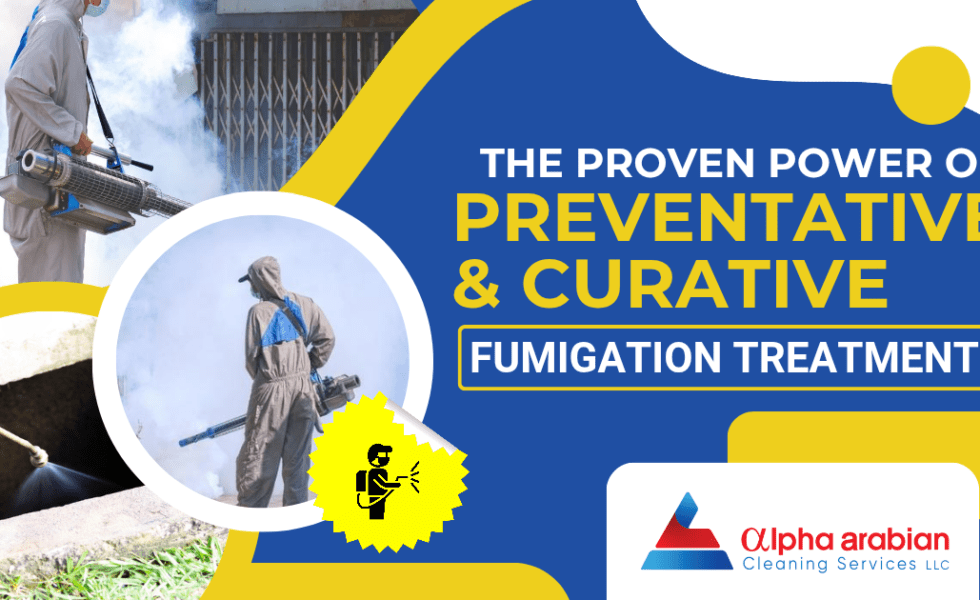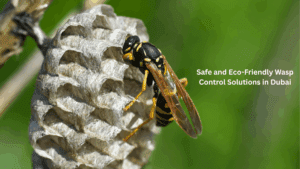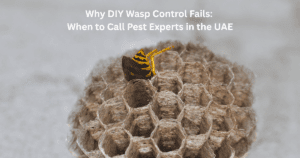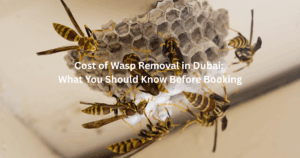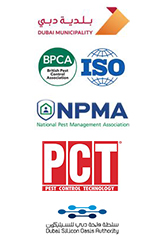Effective Ant Colony Elimination: Residential and Commercial Ant Control Solutions
Ant infestations pose a significant challenge for residential and commercial properties, leading to food contamination, structural damage, and regulatory issues. These pests form intricate colonies, making eradication difficult without targeted strategies. Unaddressed infestations can quickly escalate, disrupting daily activities and business operations.
Effective ant control requires a comprehensive approach that includes preventive measures, treatment options, and professional pest management services. This blog provides insights on identifying, preventing, and eliminating ant infestations, ensuring long-term protection against these persistent pests.
Understanding Ant Colonies: Behaviour and Lifecycle
Ants reside in well-structured colonies that comprise three primary castes, each with distinct roles. Queens are tasked with reproduction, consistently laying eggs to expand the colony. Worker ants, which are sterile females, gather food, maintain nests, and care for larvae. Drones, the male ants, exist solely to mate with the queen before dying shortly after.
The ant lifecycle includes four stages: egg, larva, pupa, and adult. The duration of these stages varies by species and environmental conditions—some species, such as the Argentine ant, form extensive super colonies, creating management challenges. Understanding the lifecycle and colony structure is essential for effective pest control strategies.
Signs of Ant Infestations
Identifying an ant infestation earlier is essential to prevent issues. A primary indicator of such an infestation is the observation of visible ant trails, where worker ants traverse between their nest and food sources. These clearly defined pathways are typically located along walls, countertops, and floors, suggesting the presence of an established colony in proximity.
Additional warning signs may include food contamination, as ants are particularly attracted to sugary or greasy substances. Nesting sites may manifest as dirt mounds in gardens or crevices within walls. The presence of discarded wings from reproductive ants and electrical damage from the Singapore ant (Monomorium destructor) indicates a growing infestation that needs immediate attention.
Residential Ant Control: Prevention and Treatment
Homeowners must take proactive measures to prevent ant infestations. Sealing entry points around doors, windows, and foundations is essential to reduce access. Proper food storage in airtight containers and regular cleaning to eliminate crumbs and spills removes attractive food sources. Additionally, addressing moisture issues, such as leaks or high humidity, helps discourage ants from nesting indoors.
To manage an infestation effectively, use surface sprays as a chemical barrier and baiting systems to target the colony. Insecticidal dust is also effective for hard-to-reach areas. Utilizing these strategies can effectively eliminate the problem and help prevent future invasions.
Commercial Ant Extermination
Businesses face significant challenges in managing ant infestations, which can jeopardize hygiene standards, affect customer perceptions, and result in non-compliance with health regulations. Usual hotspots include kitchens, storage areas, restrooms, and electrical units, where food debris and moisture promote nesting.
To effectively address these issues, commercial properties should implement perimeter spraying, use baiting stations in at-risk areas, and hire professional exterminators for larger infestations. Furthermore, food industry establishments must maintain stringent hygiene protocols to reduce the risks associated with ant activity.
Seasonal Ant Infestations: Causes and Solutions
Businesses and homeowners must act proactively to prevent ant infestations during the season. In spring and summer, ants become highly active, searching for food and water. To prevent infestations, seal structural cracks, apply outdoor insecticidal barriers, and maintain strict sanitation.
During the fall and winter, ants seek warmth indoors, leading to an increase in infestations. To combat this, reduce indoor moisture, eliminate potential nesting sites, and use targeted indoor baiting techniques. Taking these steps will help protect your space from persistent pests year-round.
Effective Ant Colony Elimination Techniques
Eliminating an ant colony requires a combination of chemical and non-chemical control methods. Surface applications of residual insecticides disrupt ant trails, while dust formulations penetrate nesting sites. Baiting systems that use slow-acting toxicants allow worker ants to transport poison back to the colony for widespread extermination.
Eco-friendly options like boiling water, vinegar and water sprays, and diatomaceous earth are effective non-chemical alternatives. These methods disrupt pheromone trails, reduce colony numbers, and help prevent future infestations without harsh chemicals.
Major Pest Ant Species and Their Control
Different ant species require specialized treatment approaches.
- The Singapore ant damages electrical systems and poses fire risks. Professional extermination is necessary.
- Argentine ants (Linepithema humile) create large colonies, making control difficult. They invade homes for moisture and food, requiring slow-acting baits for effective elimination.
- The White-footed house ant (Technomyrmex albipes) thrives on sugar and is insecticide-resistant. Baiting with sweet gel attracts workers, leading to colony extermination.
- The Pharaoh’s ant (Monomorium pharaonis) is an invasive indoor species that splits colonies quickly, making traditional insecticides ineffective. Slow-acting bait systems are the best solution for eradication.
- Carpenter ants (Camponotus spp.) create galleries in wood, causing damage. They nest in wood but don’t eat it. Control includes removing damaged wood and using insecticides and bait stations.
Conclude When to Hire Professional Pest Control Services
While do-it-yourself methods may be suitable for minor ant infestations, professional intervention is crucial for severe cases. Licensed exterminators from Alpha Arabian Professional Ant Control Service conduct thorough inspections to locate nests, identify species, and apply targeted treatments effectively.
These professional services provide long-term solutions through advanced pesticide applications, regular monitoring, and preventative maintenance, ensuring complete eradication and reducing re-infestation.
Effective ant control combines preventive measures, appropriate treatments, and professional expertise. Understanding colony behaviour and implementing seasonal strategies can help homeowners and businesses avoid ant infestations. When you partner with Alpha Arabian Professional Ant Control Service, you’re guaranteed a long-term solution to persistent infestations.
Eco-Friendly Pest Control: Sustainable Solutions for a Safer Environment
As environmental concerns continue to grow, eco-friendly pest control is gaining importance today. Traditional methods often use harsh chemicals harmful to health, pets, and the environment. Fortunately, organic and eco-friendly pest management options are safer while maintaining our ecosystem’s delicate balance. These solutions protect our health and promote a sustainable approach to pest management.
What is Eco-Friendly Pest Control?
Eco-friendly pest control, commonly referred to as organic or green pest management, employs environmentally safe methods and products for pest control populations. In contrast to conventional extermination methods, this approach emphasizes preventive strategies, the minimal use of chemicals, and natural solutions that do not adversely affect beneficial insects or the surrounding environment.
Key Benefits of Eco-Friendly Pest Control
- Safety is paramount, as it mitigates exposure to hazardous chemicals, fostering a healthier environment for families, pets, and employees.
- Environmental sustainability requires the use of biodegradable, non-toxic products.
- Long-term prevention focuses on addressing the root causes of infestations rather than just eliminating the pests.
- Regulatory compliance is ensured by adhering to the environmental standards and regulations established by municipalities and environmental agencies.
- Additionally, eco-friendly methods help to preserve beneficial insects, ensuring that pollinators like bees and butterflies are not harmed.
Methods of Organic Pest Control
Integrated Pest Management (IPM)
Integrated Pest Management (IPM) is fundamental to organic pest control, combining biological, mechanical, and preventive strategies to reduce pesticide use while managing pests effectively. Key components of the IPM approach include:
- Natural predators, such as ladybugs and birds, are used to manage pest populations through biological control.
- Using traps, barriers, and physical removal to deter pests.
- Applying plant-based pesticides, such as neem oil and pyrethrin.
- Limiting pest habitats by reducing moisture, sealing entry points, and removing food sources.
Organic and Non-Toxic Solutions
- Essential Oils – Natural repellents like peppermint, eucalyptus, and citronella effectively deter insects without harmful chemicals.
- Diatomaceous Earth – This powder dehydrates and eliminates pests, including ants and cockroaches.
- Boric Acid – An organic solution for controlling termites and cockroaches.
- Homemade Traps – Pests are naturally attracted to vinegar, sugar, and soap-water mixtures.
Eco-Friendly Pest Control Process
- Inspection
A thorough inspection assesses the infestation’s severity and identifies possible entry points for pests.
- Identification
Pest control professionals identify the type of pest to determine the best treatment method.
- Sanitization and Exclusion
Implement effective sanitation and seal entry points to prevent pests from entering and thriving.
- Eco-Friendly Treatment
Eco-friendly pesticides and organic pest control methods eliminate infestations while reducing environmental impact.
Why Choose Eco-Friendly Pest Control Over Traditional Methods?
Traditional pest control methods often depend on chemical-based extermination techniques; however, eco-friendly solutions prioritize sustainable pest management practices. The following points illustrate why the adoption of green pest control is a prudent decision:
- Environmental Protection – This approach reduces pollution and fosters ecological balance.
- Health and Safety – It minimizes human and pet exposure to hazardous chemicals.
- Long-Term Effectiveness – Green pest control seeks to prevent infestations, offering more than just temporary relief.
- Legal Compliance– These methods align with environmental regulations and safety standards.
Eco-Friendly Pest Control Services in the UAE
Alpha Arabian offers eco-friendly pest control services across the UAE for residential, commercial, and industrial sectors. Our team of experts is extensively trained in the latest sustainable pest control techniques, ensuring that we deliver effective solutions tailored to your specific requirements.
Our Services Include:
- Rodent Control – Utilization of humane traps and exclusion methods to eradicate rodents.
- Insect Control – Use organic treatments to control ants, cockroaches, and termites.
- Mosquito and Fly Control – Use natural repellents and biological control methods to lower mosquito populations.
- Bird Control – Employment of non-lethal deterrents to prevent birds from nesting in undesired locations.
Conclusion
Eco-friendly pest control is the future of sustainable pest management. We protect residential, industrial, and commercial properties using organic and non-toxic solutions. Whether you need pest control for a home or a business, choosing environmentally friendly methods ensures a safer, pest-free environment for everyone.
Alpha Arabian is dedicated to delivering exceptional eco-friendly pest control solutions in the United Arab Emirates. Contact us to learn more about our sustainable pest control services.
Frequently Asked Questions (FAQs)
1. Is eco-friendly pest control as effective as chemical methods?
When applied correctly, eco-friendly pest control is equally effective. It emphasizes prevention, habitat modification, and natural solutions for long-term pest management.
2. Can I implement green pest control methods at home?
Absolutely! Homeowners can use essential oils, diatomaceous earth, and proper sanitation to deter pests naturally.
3. Are eco-friendly pest control methods safe for pets and children?
These methods utilize non-toxic and organic solutions, making them safe for pets and children.
4. How often should I schedule eco-friendly pest control services?
The treatment needed depends on the infestation’s severity. For prevention, we recommend quarterly treatments.
5. Do eco-friendly pest control methods take longer to work?
Eco-friendly solutions may take longer than chemical pesticides since they focus on long-term prevention and habitat modification, but they offer lasting results without harming the environment.
6. Will eco-friendly pest control eliminate all pests permanently?
No pest control method guarantees permanent eradication. However, eco-friendly approaches focus on long-term prevention, reducing the risk of reinfestation with sustainable, non-toxic solutions.
How to Get Rid of Fruit Flies: The Ultimate Guide to Prevention and Control
Fruit flies are diminutive yet troublesome insects that can rapidly transform a kitchen into a breeding site. They are predominantly attracted to ripe and fermenting fruits, sugary beverages, and various organic materials. Despite their small dimensions, fruit flies can present a significant nuisance and may pose health risks by facilitating the transmission of harmful bacteria.
This comprehensive guide aims to provide detailed insights into fruit flies, encompassing their life cycle, origins, the associated risks, and, most importantly, strategies for their elimination and prevention.
What Are Fruit Flies and How to Identify Fruit Flies
Fruit flies, scientifically designated as Drosophila melanogaster, are diminutive flying insects that flourish in warm environments abundant with fruits, vegetables, and sugary liquids. Their physical characteristics include a tan to brownish-black body, red eyes, and a pair of wings. The tiny pest measures approximately 0.12 inches in length but has a remarkable capacity for rapid reproduction, complicating its management once an infestation occurs.
Accurate identification of fruit flies is crucial for distinguishing them from other flying insects. They are comparable in size to a grain of rice, characterized by their tan or brownish bodies and distinctive red eyes. They tend to inhabit humid areas where organic matter is present, such as ripened fruit, waste receptacles, kitchen drains, and waste containers. Fruit flies possess a single set of wings, unlike common houseflies.
Life Cycle of Fruit Flies
Due to their fast life cycle, fruit flies lead to a quick rise in infestations. Due to their reproductive cycles, even a minor issue can quickly develop into a significant problem within weeks. Here’s a breakdown of their development stages:
- Egg Stage: A female fruit fly can lay 2,000 eggs on moist, decomposing food surfaces.
- Larval Stage: After about 24 to 30 hours, the eggs hatch, and the larvae emerge, starting to feed on rotting organic material.
- Pupal Stage: Within a few days, the larvae undergo metamorphosis and become pupae.
- Adult Stage: Mature fruit flies emerge from their pupal stage and are ready to start reproducing within 48 hours after breaking free.
- Lifespan: Depending on environmental factors, adult fruit flies generally live for up to 30 days.
Fruit Flies vs. Gnats: What’s the Difference?
Many people mistakenly confuse fruit flies with gnats, even though they are different species. Understanding the differences between these insects is crucial for effective pest control strategies. Fruit flies have tan or brown bodies with red eyes and are usually found near fruits, often hovering around various types of produce. In contrast, gnats are tiny and typically black, congregating around plants and in humid environments rather than around food sources.
What Attracts Fruit Flies?
Fruit flies are attracted to fermenting or rotting organic matter. Even unripe fruits can draw them in, as they often lay their eggs on these surfaces to ensure food availability for their larvae. Their sources of attraction include:
- Overripe or decaying fruits and vegetables
- Sugary beverages like wine, beer, and fruit juice
- Garbage cans containing organic waste
- Kitchen drains with food residue
- Wet mops and cleaning rags
- Recycling bins with food-smeared bottles and cans
Health Risks of Fruit Flies
Despite their harmlessness in biting humans, fruit flies pose considerable health risks. They carry bacteria and germs from contaminated surfaces into clean areas, which can lead to potential health hazards. An infestation of fruit flies can also result in substantial financial losses, particularly in settings such as food storage facilities and restaurants, where they contribute to the spoilage of perishable items. Research has demonstrated that fruit flies may harbour various pathogenic bacteria, including:
- Salmonella: Involved in severe cases of food poisoning.
- Listeria: Linked to serious infections, particularly in pregnant women and individuals with compromised immune systems.
- E. coli: A bacterium known for causing gastrointestinal disturbances.
How to Eliminate Fruit Flies
If you are experiencing difficulties with fruit flies, please consider the following systematic approach to eradicating them:
- Identify and Eliminate Breeding Sites
To keep your kitchen clean, promptly discard overripe fruits and vegetables and store fresh produce in the refrigerator. Take out the trash daily and clean the bins regularly to prevent odours. Immediately clean up spills, especially sticky ones, and regularly wipe down surfaces and sinks.
- Sanitize Drains
To keep your kitchen drains clear and functioning efficiently, regularly pouring boiling water or vinegar down them can help eliminate residue and break down buildup. Additionally, using a brush along with a commercial-grade drain cleaner can remove lingering debris. Consistent maintenance is key to ensuring that your kitchen drainage system operates smoothly.
- Implement Fruit Fly Traps
To tackle a fruit fly infestation, try simple traps like a DIY trap with apple cider vinegar covered with plastic wrap and small holes. Leaving an open bottle of leftover wine or beer also works. For effective flying insect control, consider the Zevo Flying Insect Trap with UV light, the Terro Fruit Fly Trap, or Aunt Fannie’s FlyPunch, which uses a plant-based lure.
- Employ Sprays to Exterminate Adult Fruit Flies
To effectively manage visible fruit flies, sprays containing pyrethrum are recommended. Even though these sprays eliminate adult flies, they do not eliminate eggs or larvae. For a thorough approach to fruit fly eradication, it’s essential to combine these sprays with other control methods.
- Strategies for Preventing Fruit Flies
To prevent fruit flies after elimination, follow these steps. Buy only necessary produce and store fruits and vegetables in sealed containers or the fridge. Wash produce immediately and dispose of trash regularly. Keep your kitchen clean by wiping surfaces and sealing fermented products. Install fine-mesh screens on windows and minimize standing water. These measures will help keep fruit flies away.
Conclusion
Fruit flies may seem just a simple annoyance, but they can pose health risks and lead to financial losses. To manage and prevent fruit fly infestations, it’s important to identify what attracts them, remove places where they breed, set up traps, and keep your environment clean.
If you find the issue too big to handle and home remedies are not working, contact a professional pest control service, such as Alpha Arabian. They can help you deal with the infestation more effectively.
Deep Cleaning Secrets: Villas and Offices Made Spotless
Maintaining a clean and organized environment is essential for comfort, hygiene, and productivity in residential and professional settings. Deep cleaning guarantees that every area is immaculate and free from dust and bacteria. Our professional cleaning services offer a comprehensive, customizable approach to ensure optimal conditions for homes and workplaces. This discussion highlights the principles of deep cleaning and underscores the benefits of investing in professional services.
What is Villa Deep Cleaning?
Villa deep cleaning goes beyond standard cleaning methods. It involves a thorough process where every part of your home is carefully addressed, from the ceilings down to the floors. An expert team diligently eliminates dust, dirt, and grime from every corner and crevice, leaving your home feeling refreshed and revitalized.
Villa deep cleaning involves:
- Kitchen Cleaning: Deep-cleaning cabinets, drawers, appliances, and countertops to remove grease and bacteria.
- Bathroom Sanitization: Cleaning involves scrubbing grout lines, disinfecting toilets, sinks, and bathtubs, and removing mold and mildew.
- Living Area Cleaning: Dusting furniture, vacuuming carpets, wiping down entertainment centers, and cleaning hard-to-reach spots.
- Bedroom Cleaning: Washing bedding, decluttering, vacuuming under furniture, and wiping mirrors and windows.
- Balcony and Terrace Maintenance: Clearing away debris, sweeping, scrubbing floors, and cleaning outdoor furniture.
Office Deep Cleaning: Enhancing Productivity in a Pristine Environment
A clean workspace is essential for promoting productivity and creating a positive impression on employees and visitors. Thorough office deep cleaning services aim to maintain a clean and organized space, ensuring the best possible conditions for productivity and comfort in the workplace.
Comprehensive Office Cleaning Services
- Surface Cleaning: This involves dusting and wiping desks, chairs, shelves, and high-touch areas such as keyboards, telephones, and door handles.
- Floor Care: Includes vacuuming carpets, sweeping and mopping hard floors, and polishing surfaces for a professional appearance.
- Restroom Sanitization: The tasks involve cleaning and disinfecting toilets, sinks, and mirrors, ensuring essential supplies are stocked and available.
- Kitchen and Breakroom Cleaning: This involves cleaning and disinfecting countertops, sinks, and appliances, as well as managing trash disposal and recycling effectively.
Why Choose Professional Villa /Office Deep Cleaning?
- Expertise: Our highly trained cleaning professionals employ advanced techniques and environmentally friendly products to guarantee a thorough and effective deep cleaning process.
- Customizable Services: We offer flexible service options, whether you require a one-time deep clean or ongoing maintenance, with plans specifically tailored to meet needs.
- Health Benefits: Eliminating allergens, bacteria, and pollutants significantly enhances indoor air quality, contributing to the overall well-being of occupants.
Why Our Villa / Office Cleaning Stands Out
- Customized Cleaning Plans: We tailor our services to accommodate your schedule and specific cleaning requirements, whether on a daily, weekly, or monthly basis.
- Highly Trained Staff: Our professional cleaning personnel undergo comprehensive training to ensure the highest standards of cleanliness.
- Eco-Friendly Practices: We utilize environmentally safe products to foster a sustainable and healthy working environment.
- Reliability and Trustworthiness: Our committed and punctual team guarantees that every cleaning task is executed efficiently and to the highest standards.
The Ultimate Cleaning Solution
Investing in professional deep cleaning services is crucial for establishing a cleaner, healthier, and more welcoming environment. Regardless of whether in residential villas or commercial offices, ensuring high standards should be a primary concern.
Alpha Arabian Cleaning Services LLC specializes in providing outstanding deep cleaning solutions tailored to meet specific needs. Our team ensures that every corner of your space is meticulously cleaned and free from harmful germs.
By choosing our services, you can enhance the overall cleanliness of your environment. We encourage you to schedule your deep cleaning service today and experience the significant benefits of a thoroughly refreshed space.
Combatting Indoor Mold: Effective Moisture Control and Prevention in Dubai
Mould proliferation remains a significant concern for homeowners and businesses in Dubai, primarily due to the region’s elevated humidity levels. This issue leads to property damage and presents considerable health risks, including allergies, respiratory symptoms, and skin irritations. Moisture management and diligent maintenance practices are essential for preventing mold growth.
This article will examine effective strategies for mitigating indoor mold growth, ensuring that residential and commercial spaces remain free from mold-related complications.
Understanding the Causes of Mold Growth
Mold thrives in damp and humid environments. Some of the primary causes of mold growth in indoor spaces include:
- High Humidity Levels
Dubai’s climate is naturally humid, making homes and offices susceptible to mold. Poor ventilation in enclosed areas like bathrooms, kitchens, and storage rooms can lead to excessive moisture buildup, providing an ideal breeding ground for mold.
- Water Leaks and Plumbing Issues
Leaky pipes, dripping faucets, or broken water supply lines contribute to excess moisture. If left unaddressed, these leaks can lead to persistent dampness, allowing mold to flourish.
- Condensation on Surfaces
Temperature differences between indoor air and exterior walls can result in condensation, particularly on windows and ceilings. This accumulated moisture fosters mold growth over time.
- Poor Ventilation
Enclosed spaces without adequate airflow can trap moisture indoors, creating favorable conditions for mold spores to multiply. Areas such as attics, crawl spaces, and closets often suffer from poor ventilation, leading to mold infestations.
- Water Intrusion and Flooding
Heavy rainfall, broken pipes, or flooding can saturate building materials like drywall, wood, and insulation. Without prompt drying and treatment, mold can quickly take hold.
Effective Moisture Control Strategies
Keeping moisture levels in check is the most effective way to prevent mold growth. Here are some proven strategies to maintain a dry indoor environment:
1. Maintain Proper Ventilation
Ensure your home or office is well-ventilated, especially in moisture-prone areas. Using exhaust fans in bathrooms and kitchens is an effective way to control indoor humidity. Keeping windows open when possible also helps circulate fresh air.
2. Use Dehumidifiers
Installing dehumidifiers in high-humidity areas can significantly reduce indoor moisture levels. Aim to keep indoor humidity below 50% to prevent mold growth.
3. Fix Leaks Immediately
Regularly inspect and repair leaks from pipes, faucets, roofs, and appliances. Even minor leaks can contribute to persistent dampness, leading to mold problems.
4. Improve Drainage Systems
Maintain proper drainage around your property to prevent water from collecting and causing potential damage. Cleaning gutters and downspouts regularly can help prevent water from seeping into walls and foundations.
5. Insulate Walls and Windows
Proper insulation can minimize condensation on windows and walls. Installing double-glazed windows and using insulation materials can help reduce moisture buildup.
6. Dry Wet Areas Promptly
After water spills, leaks, or floods, dry affected areas immediately. Using fans, towels, and professional drying equipment can prevent mold from spreading.
7. Regular AC Maintenance
Dubai’s hot climate requires frequent air conditioning use. However, AC systems can accumulate moisture, creating an ideal environment for mold. Regular AC servicing, including duct cleaning and filter replacement, helps prevent mold buildup.
How to Prevent Mold in Common Problem Areas
1. Kitchens
To maintain a healthy kitchen environment, install an exhaust fan to eliminate cooking moisture. Additionally, check for leaks under sinks and around appliances to prevent water damage. Lastly, store dry food properly to prevent mold growth.
2. Bathrooms
To reduce moisture buildup after showers, use a bathroom fan or open windows for ventilation. Wipe down wet surfaces and fix any plumbing leaks to avoid water pooling, helping to maintain a dry environment.
3. Bedrooms and Living Areas
Keep furniture slightly away from walls to improve airflow. Use air purifiers to decrease mold spores in the air. Avoid overwatering indoor plants, as moist soil can promote mold growth.
4. Attics and Basements
To enhance ventilation, consider installing air vents. It’s important to inspect the roof for leaks and repair them promptly to prevent further issues. Additionally, keeping the area dry and free of clutter will help minimize the risk of mold growth.
Professional Mold Prevention and Removal Services
While DIY methods for mold prevention can be helpful, professional mold control services offer a more durable solution. Mold remediation experts utilize specialized equipment and advanced techniques to detect, remove, and prevent mold.
Benefits of Professional Mold Services
- Comprehensive mold inspection and detection
- Safe and eco-friendly mold removal
- High-quality air purification and dehumidification
- Long-term prevention strategies tailored to your property
Conclusion
Mold control is crucial for maintaining a healthy and safe indoor environment, particularly in a humid climate like Dubai. To protect your home or office from mold infestations, it is important to implement effective moisture control techniques, enhance ventilation, and consider professional mold prevention services like those offered by Alpha Arabian. By staying proactive about mold prevention, you can ensure a clean and mold-free living space.
Preventative and Curative Pest Fumigation Treatments: Safe and Effective Pest Control
Pest infestations pose a significant threat to businesses, especially in agriculture, warehousing, and food storage. Fumigation is an effective pest control method that utilizes insecticidal gases to eliminate infestations at all life stages, including eggs, larvae, pupae, and adults. In UAE, fumigation is crucial for protecting commodities, ensuring compliance with global trade standards, and maintaining food quality.
This article explores various fumigation treatments, highlighting their advantages and importance in protecting stored products.
What is Fumigation?
Fumigation is a pest control method that uses an insecticidal gas to target a specific area, allowing it to seep into cracks, crevices, and pores to eliminate pests. This technique is commonly employed to treat stored goods, prevent infestations in agricultural products, and protect structures from pest damage.
Key Benefits of Fumigation
- Comprehensive Pest Elimination – Targets all life stages of insects, ensuring total eradication.
- Non-Residual Treatment – Leaves no harmful residues on food products or surfaces.
- Regulatory Compliance – Meets international quarantine and export trade requirements.
- Versatile Application – Effective for silos, warehouses, containers, and large structures.
- Prevention of Microbial Growth – Helps control mould and fungi in stored goods.
Types of Pest Fumigation Treatments
Silo Fumigation
Silo fumigation serves to effectively treat substantial quantities of stored grains and other commodities within silos. This method focuses on eradicating all pests, including concealed larvae and eggs. For the fumigation process to be successful, silos must adhere to specific sealing requirements to prevent gas leakage.
Structure Fumigation
Whole-building fumigation is a powerful solution designed to combat major pest infestations in various structures, including warehouses, mills, and processing plants. The facility is completely sealed and then treated to eliminate pests.
Container Fumigation (Static)
Container fumigation is crucial for international trade, ensuring that shipping containers and their contents remain pest-free. This process prevents invasive pests across borders and helps maintain compliance with import-export regulations.
What is a Fumigant and Fumigation Process?
Fumigants are volatile pesticides that function as poisonous gases within enclosed environments, thereby effectively exterminating pests. Aluminium Phosphide and Magnesium Phosphide are commonly used fumigants, typically available in tablet or granule form. These substances are often employed to treat grains, nuts, tobacco, and other stored commodities.
Fumigation establishes a sealed, airtight environment that effectively eradicates pests and safeguards your valuable possessions. Fumigant gas is then released, facilitating penetration into all infested areas. Once the treatment is over, ventilate the area to remove any leftover gas and test it for safety before re-entry.
The presence of pests in stored products can lead to significant economic losses and health risks. Common issues resulting from pest infestations include:
- Direct damage to grains and food products
- Contamination from insect debris and excrement
- Structural damage to wooden storage units and packaging
- Mold and fungal growth stemming from pest activities
- Alterations in the taste, smell, and appearance of food products.
Negative Effects of Infestation on Stored Products
- Nutritional Loss – Pests consume essential nutrients in stored grains.
- Ingredient Modification – Infested products undergo chemical changes.
- Adverse Health Effects – Contaminated food can cause foodborne illnesses.
- Economic Losses – Increased wastage and decreased market value.
Why Choose Fumigation Over Other Pest Control Methods?
Fumigation provides comprehensive pest control by reaching the most hidden areas where pests may reside, making it more effective than sprays and baits. It is particularly effective against stored product pests for several reasons: it eliminates all developmental stages of insects, penetrates deeply into infested materials, and works exceptionally well in enclosed environments.
Conclusion
Fumigation is vital for pest management, ensuring food safety, regulatory compliance, and economic protection. It effectively controls pests in agriculture, warehouses, and global trade. For expert fumigation services tailored to your business, trust licensed professionals with extensive experience.
Contact Alpha Arabian today for a customized pest control solution that guarantees safety and efficiency!
Understanding Bees: Life Cycle, Species And Powerful Prevention Strategies
Bees serve an essential role within our ecosystem, contributing to pollination and the preservation of biodiversity. However, their establishment of hives in or adjacent to residential areas may present safety concerns. Understanding the life cycle of bees, their species and appropriate strategies for preventing infestations is essential for coexisting harmoniously with these beneficial insects.
This guide aims to equip individuals with the necessary knowledge to make informed decisions while prioritizing safety for humans and bees.
The Life Cycle of Bees
Bees undergo a comprehensive metamorphosis comprising four distinct stages:
- Egg Stage
A queen bee deposits eggs within the cells of honeycombs. These eggs are diminutive, measuring approximately 1 to 1.5 mm in length. Following an incubation period of around three days, the eggs hatch into larvae.
- Larva Stage
The larval stage represents a period of rapid growth during which the young bees are initially nourished with royal jelly, followed by a diet of honey and pollen. Worker bees provide sustenance to the larvae nearly 1,000 times daily, facilitating their swift development.
- Pupa Stage
During the pupa stage, larvae undergo significant morphological changes, developing distinct features such as wings, legs, and compound eyes. The anatomical structure of the organism increasingly mirrors that of an adult bee.
- Adult Stage
Fully developed bees emerge as either workers, drones, or new queens. Worker bees assume various responsibilities within the hive, drones contribute to the reproductive processes, and the queen perpetuates the lifecycle by laying thousands of eggs throughout her lifespan.
Types of Bees
With over 25,000 bee species identified globally, the following are among the most commonly encountered:
- Honey Bees (Apis mellifera)
Honey bees are essential for pollination and the production of honey. While generally non-aggressive, they defend their hive if they perceive a threat. These bees organize themselves into structured colonies of a queen, drones, and worker bees.
- Bumble Bees (Bombus spp.)
Bumble bees are known for their exceptional pollination capabilities, thriving in flower-rich environments. They inhabit small underground colonies. Although they can sting multiple times, they typically do so only in response to provocation.
- Carpenter Bees (Xylocopa spp.)
Carpenter bees are characterized by their large, blue-black bodies and are known to nest in wood. They may cause structural damage to wooden furniture and buildings. While these bees do not produce honey, they contribute significantly to pollination.
- Killer Bees (Africanized Honey Bees)
Killer bees exhibit greater aggression compared to their non-Africanized counterparts. Typically, they nest near water bodies or dense vegetation and attack in large swarms when provoked.
- Wasps and Hornets (Non-True Bees)
Frequently mistaken for bees, wasps and hornets are generally more aggressive. They construct nests resembling paper, which can be found in trees, attics, or wall cavities. Unlike honey bees, these insects possess the ability to sting multiple times.
This overview encapsulates the diversity of bee species and highlights their ecological significance alongside safety considerations regarding human interaction.
Preventing Bee Infestations
While bees play a crucial role in our ecosystem, unwanted infestations near residential properties can present safety hazards. The following strategies are recommended for effective prevention:
- Identify and Seal Entry Points
Bees often access homes through tiny openings in walls, attics, and vents. Regular inspections and sealing of these entry points are recommended to prevent potential nesting.
- Remove Food Sources
Bees are attracted to sweet and floral odours. It is prudent to avoid leaving sugary beverages, fruits, or open food outdoors, particularly during the warmer months.
- Maintain Your Yard
Trim overgrown vegetation to reduce nesting areas and store woodpiles properly to prevent carpenter bee infestations. Add bee-repelling plants like citronella, eucalyptus, and mint to your landscape.
- Utilize Bee Repellents
Natural repellents, including cinnamon, garlic, and vinegar sprays, can effectively deter bees from nesting in undesired locations. However, it is vital to use these substances judiciously to avoid negatively impacting beneficial pollinators.
- Install Protective Screens
Using mesh screens on windows, vents, and chimneys will prevent bees from entering homes while allowing adequate ventilation.
- Relocate Beehives Professionally
If you spot a beehive near your home, admire its beauty and avoid disturbing it. Instead, contact a licensed beekeeper or pest control service for safe relocation.
- Address Existing Infestations Promptly
If bees are found inside walls or ceilings, do not seal the entry point immediately. Trapped bees might look for other escape routes within the structure. It is advisable to engage pest control professionals to facilitate the removal of aggressive species, such as Africanized bees or wasps, in a manner that ensures safety and efficiency.
Conclusion
Bees are a fundamental part of our ecosystem, contributing to pollination and biodiversity. However, infestations near homes and businesses can be hazardous. By understanding their lifecycle, species, and prevention methods, we can make informed decisions that ensure safety while preserving these essential pollinators. If you suspect a bee infestation, always seek expert assistance, like Alpha Arabian Pest Control Service, to manage the situation responsibly.
Discover the Hidden Dangers: How Dust Affects Your Health and Home
Dust accumulation is a common phenomenon observed in every corner of the globe. It settles relentlessly on various surfaces, including the polished wood of furniture, the delicate screens of electronic devices, and the often-neglected nooks of flooring. This fine layer of dust can not only obscure the beauty of these surfaces but also serve as a reminder of the ongoing battle against the elements in our indoor environments.
Engaging in a professional dust removal service in Dubai can mitigate the potential hazards associated with dust accumulation and enhance the quality of the indoor environment. This article examines the hidden risks attributed to dust and discusses how specialized cleaning services can significantly improve indoor air quality and overall hygiene.
The Health Risks of Dust
Dust is a mixture of tiny particles, including fine dirt, airborne pollen, pet dander, and potentially harmful bacteria that can linger in the air. When inhaled over extended periods, dust can lead to various respiratory issues, trigger allergic reactions, and cause skin irritations. It is crucial to effectively manage dust accumulation, as neglecting this issue can aggravate pre-existing health conditions, such as asthma.
This exacerbation can lead to increased difficulty in breathing, ultimately impacting the overall well-being of affected individuals. By enlisting the services of a professional cleaning company in Dubai, you can ensure thorough and effective removal of dust, promoting a healthier indoor environment and significantly improving the quality of the air you breathe.
How Dust Damages Your Home
Dust is more than just an unwelcome guest in our homes; it poses a significant risk to our health and the integrity of living spaces. Dust accumulation on furniture, floors, and electronics diminishes their beauty and can cause irreversible damage. The fine particles can settle into crevices, scratching delicate finishes and dulling vibrant colours. Additionally, dust has a sneaky way of clogging air vents, forcing your cooling systems to work overtime and straining efficiency.
By enlisting a reliable dust removal service in Dubai, you can safeguard your home from these detrimental effects while preserving its aesthetic appeal and ensuring a healthier environment for you and your family.
Keeping Dust Outside
Maintaining a clean indoor environment begins with preventing dust from infiltrating the home. Several effective strategies may be employed to achieve this objective, including the usage of fiber doormats designed to capture dirt from footwear, ensuring that windows remain closed during periods of high foot traffic, and effectively sealing any cracks in doors and windows.
Engaging a professional cleaning service in Dubai can provide valuable guidance in implementing these preventive measures to minimize dust accumulation within the living space.
The Role of Air Filters and Purifiers
One of the most effective strategies for minimizing indoor dust accumulation is the utilization of air filters and purifiers. It is recommended that air filters be replaced every three months to mitigate the circulation of dust particles. Air purifiers serve to capture airborne dust before it settles on surfaces. When these devices are used alongside a trusted dust removal service in Dubai, they significantly improve indoor air quality.
Cleaning and Maintenance Tips
Regular cleaning is crucial for managing dust and allergens in your home. Wash your bedding every two weeks to reduce dust mites, and groom your pets frequently to minimize hair and dander. Using a vacuum with a HEPA filter can capture 99.7% of dust particles.
For a thorough cleaning, consider hiring a professional cleaning service in Dubai. They use advanced techniques for effective dust removal, improving your home’s cleanliness and air quality. Implementing these tips can help create a dust-free environment.
Benefits of Professional Dust Removal
Hiring a dust removal service in Dubai offers numerous advantages. These professionals utilize advanced equipment for deep cleaning, significantly reducing airborne allergens and pollutants in your home. Additionally, regular dust removal can help extend the lifespan of your furniture and appliances, saving you money in the long run.
Choosing professional cleaning services allows you to maintain a healthier living space, keeping your home free from dust and allergens. This proactive approach not only enhances the quality of indoor air but also promotes overall well-being. Embracing professional dust removal is a smart choice for maintaining a clean and comfortable home.
Conclusion
Dust affects both health and home environments. While regular cleaning is essential, Alpha Arabian Cleaning Service offers the most effective solution. Whether you need dust removal or a comprehensive cleaning service in Dubai, investing in professionals ensures your home remains clean and safe.
With Alpha Arabian Cleaning Service, you can maintain a healthier living space by minimizing allergens and dust-related issues. Their expertise guarantees thorough cleaning, contributing to your overall well-being. Choose Alpha Arabian for a dust-free home and enjoy peace of mind knowing your space is in good hands.
